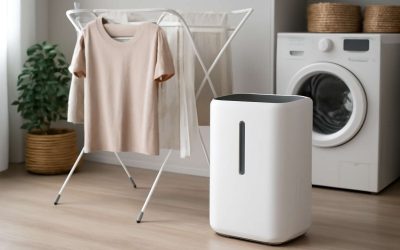
Humidity, the amount of water vapor in the air, is an important factor in maintaining a healthy climate and determining how we live our lives. While humidity affects the atmosphere in many positive ways, it can also be harmful to health.
The most common measurement of humidity is relative humidity (RH). RH is a percentage that is determined by the ratio of water vapor mass to the total parcel of moist air in an atmosphere. It is expressed in gram per cubic meter and grams per kilogram, depending on the temperature.
Absolute humidity describes the mass of water vapor in a given volume of moist air and is also expressed in gram per cubic meter or grams per kilogram. The higher the temperature, the more water vapor can be held.
Relative humidity is also commonly used to describe the difference between a specific humidity reading and a maximum value for a given air temperature. A high relative humidity reading indicates that the air is dry and a low one means it’s humid.
Aside from affecting the air quality of a room, lower humidity can cause damage to items such as furniture and wood floors. A lowered level of moisture will make the individual fibers of wood shrink at an uneven rate, causing them to crack and warp. Likewise, other materials made from natural fibers such as leather and paper will become brittle and break easily.
Moisture in the air can also impact how bacteria, germs, and biological organisms circulate in a home. In a healthy indoor environment, that 40 to 60% sweet spot between high and low humidity levels keeps allergens, mold, and dust mites at bay and reduces the spread of airborne viruses.
In addition to affecting air quality, low humidity can make it more difficult for people with asthma and other respiratory conditions to breathe comfortably. It can also cause the mucous membranes of the nose and throat to dry out, preventing them from functioning properly.
This can lead to respiratory problems, such as coughing, wheezing and shortness of breath. It can also worsen symptoms for those with eczema, hay fever, and allergies.
It’s important to keep a low humidity level in your home to discourage mold and mildew growth, as these can produce a foul odor and cause noticeable black spots on surfaces. Excessive humidity in damp areas like bathrooms and kitchens can create a safe haven for these organisms, which are notoriously difficult to control.
The effects of humidity are often underestimated, and can be dangerous for both humans and pets. For example, pet dander in the air can be more difficult to remove from a pet’s coat and skin, which can then trigger allergic reactions and cause respiratory issues for your pets.
It’s important to know what humidity is and why it matters so that you can make the best decisions for your family and your home. Keeping a close eye on humidity and working with a qualified HVAC expert to ensure you are maintaining a healthy level of moisture can help improve your comfort and quality of life.



0 Comments